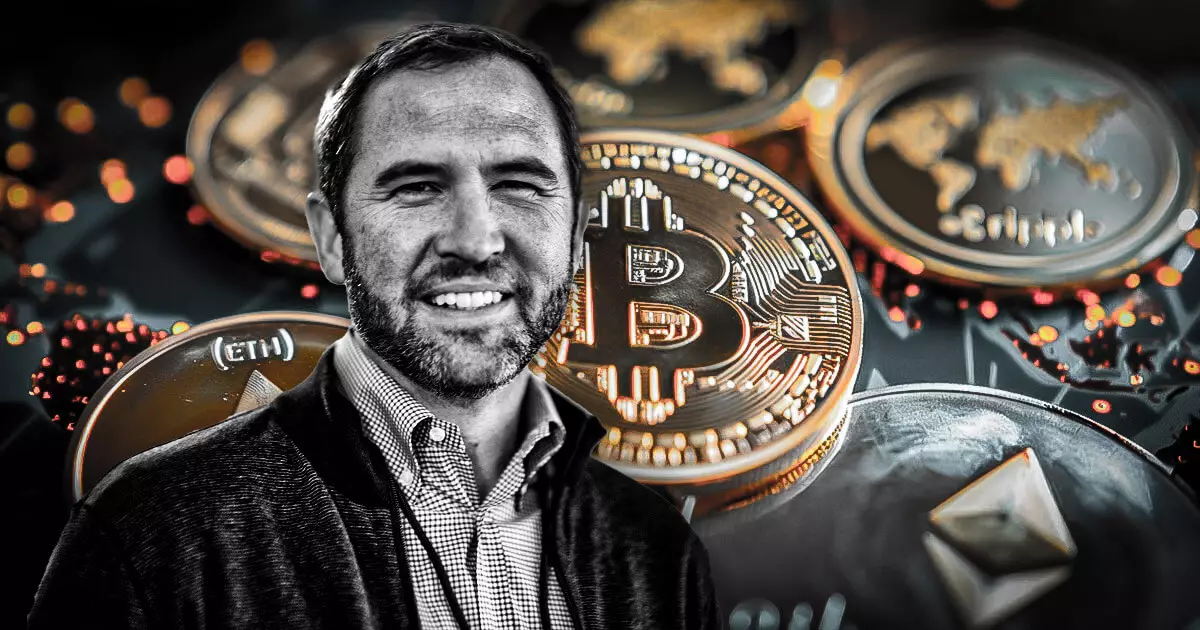In recent discussions held in Washington, D.C., Ripple Labs CEO Brad Garlinghouse expressed a newfound optimism concerning the regulatory landscape for cryptocurrencies in the United States. His engagements with key lawmakers—including prominent figures like Senators Tim Scott and Chuck Schumer, alongside Representatives French Hill, Ritchie Torres, and Bill Huizenga—highlight a critical moment. These meetings not only exemplify proactive efforts within the cryptocurrency sector but also indicate a willingness among lawmakers to collaborate on developing regulatory frameworks that will shape the future of digital assets.
Garlinghouse’s insights resonate with a broader sentiment within the crypto community, where stakeholders see an emerging bipartisan push toward clearer regulations. The discussions underscore a rare opportunity for bipartisan legislation aimed at establishing a regulatory structure that promotes innovation while simultaneously safeguarding market stability. The presence of bipartisan cooperation in crafting these laws is particularly noteworthy, as it has often been a missing element in previous legislative efforts. The potential to create a robust regulatory environment could pave the way for greater investment and growth within the cryptocurrency market.
Legislative efforts like the Stablecoin Transparency and Accountability for a Better Ledger Economy (STABLE) Act from the House of Representatives and the Guiding and Establishing National Innovation for US Stablecoins (GENIUS) Act being deliberated in the Senate are examples of this momentum. Both of these initiatives are focused on creating defined guidelines for stablecoin issuers, emphasizing the importance of licensing, risk management, and reserve asset requirements. This focus on regulation indicates a growing acknowledgment among lawmakers regarding the potential impact of stablecoins on the economy and instills a sense of urgency to create safeguards.
In tandem with legislative developments, regulatory bodies such as the U.S. Securities and Exchange Commission (SEC) and the Commodity Futures Trading Commission (CFTC) are also playing a critical role in establishing frameworks aimed at reconciling economic growth with market integrity. This is demonstrated by strategic appointments within these agencies, including individuals with favorable views toward cryptocurrencies. These personnel changes could potentially lead to a quicker establishment of regulations that facilitate market growth while addressing investor protection.
Despite the optimistic developments, significant uncertainties linger regarding the final outcomes of various regulatory proposals. The dynamic nature of politics, paired with the complexities inherent to the cryptocurrency market, makes predicting the future trajectory of these regulations challenging. Nevertheless, Garlinghouse’s reassurances, alongside proactive moves from key legislative figures, signal a willingness to address the needs of the evolving digital asset landscape, offering hope for a balanced approach to regulation.
While the road to definitive crypto regulations in the United States remains intricate and possibly tumultuous, recent developments suggest a cautious optimism for progress that embraces innovation and stability within the market. As stakeholders watch closely, the coming months will be pivotal in determining how this evolving regulatory landscape unfolds.















Leave a Reply